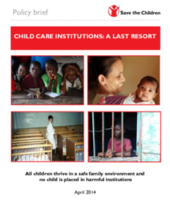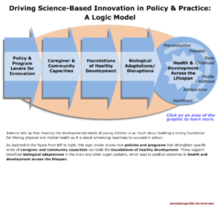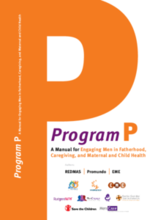Displaying 3561 - 3570 of 4392
This issue of the US-based journal Future of Children, entitled ‘Helping Parents, Helping Children: Two-Generation Mechanisms,’ reviews intervention programs for children and families of low socioeconomic status and on the mechanisms of child development that those intervention programs are trying to influence.
Save the Children has released a policy brief outlining its position on the institutional care of children.
This narrated interactive feature presents a logic model showing how policies and programs that strengthen specific kinds of caregiver and community capacities can build the foundations of healthy development.
This video from Learningservice.info discusses issues around orphanage volunteering and tourism. The video is accompanied by a number of prompts for further discussion.
This introductory article of a Special Issue of Infant Mental Health Journal on Global Research, Practice, and Policy Issues in the Care of Infants and Young Children at Risk provides a useful overview, placing the articles in the broader contexts of research on institutionalized children and different initiatives to prevent inappropriate care, either through addressing the quality of the care provided or ensuring the appropriateness of the type of care environment provided.
This article investigates effectiveness of parenting interventions on reducing harsh and harmful parenting practices in low-to-middle income countries.
This final section of Program P: A Manual for Engaging Men in Fatherhood, Caregiving, and Maternal and Child Health is designed for health sector workers and activists who are interested in developing and implementing social-awareness-raising activities in their community that promote the benefits of active fatherhood as a way to achieve gender equality, benefit children, and improve the lives of men and women.
This section is the second of three in Program P: A Manual for Engaging Men in Fatherhood, Caregiving, and Maternal and Child Health.
This section is the first of three in Program P: A Manual for Engaging Men in Fatherhood, Caregiving, and Maternal and Child Health.
The Program P Manual is a resource developed as part of the global MenCare campaign that identifies best practices on engaging men in maternal and child health, caregiving, and preventing violence against women and children, through the lens of gender equality. Though the main focus of Program P is to engage men via the public health sector, the manual also provides tools and resources for individuals and organizations that want to work more generally with men as caregivers and fathers.






